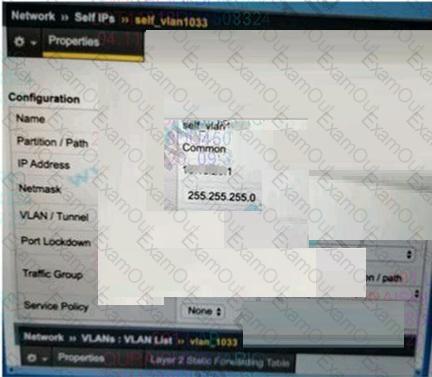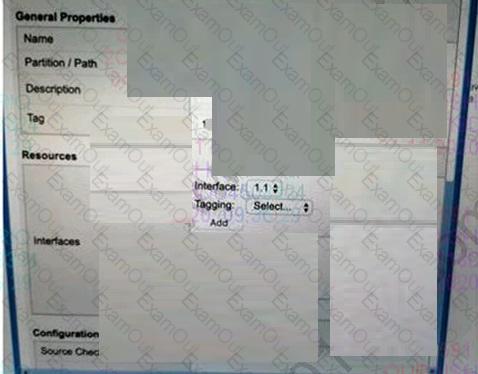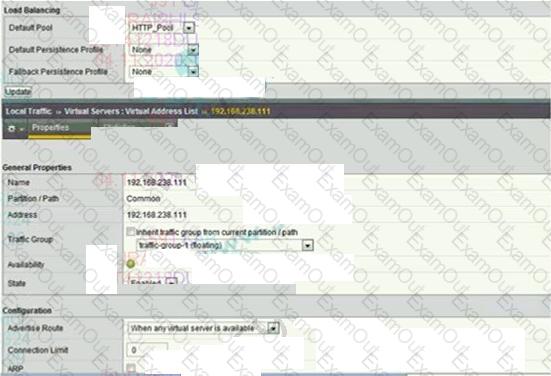How should a BIG-IP Administrator control the amount of traffic that a newly enabled pool member receives.
Refer to the exhibit.

How many nodes are represented on the network map shown?
A site needs to terminate client HTTPS traffic at the BIG-IP and forward that traffic unencrypted. Which two are profile types that must be associated with such a virtual server? (Choose two.)
Refer to the exhibit


The network team creates a new VLAN on the switches. The BIG-IP Administrator needs to create a
configuration on the BIG-IP device. The BIG-IP Administrator creates a new VLAN and Self IP, but the
servers on the new VLAN are NOT reachable from the BIG-IP device.
Which action should the BIG-IP Administrators to resolve this issue?
A BIG-IP Administrator needs to apply a health monitor for a pool of database servers named DB_Pool
that uses TCP port 1521.
Where should the BIG-IP Administrator apply this monitor?
Refer to the exhibit.

An LTM device has a virtual server mapped to www.f5.com. Users report that when they connect to
/resources/201.1.2h.l_l.com they are unable to receive content.
What is the likely cause of the issue?
A standard virtual server has been associated with a pool with multiple members. Assuming all other settings are left at their defaults, which statement is always true concerning traffic processed by the virtual server?
Which two statements describe differences between the active and standby systems? (Choose two.)
What should the BIG-IP Administrator do to apply and activate a hotfix to a BIG-IP device that is currently running version 11.0.0 on active partition HD1.1?
A Standard Virtual Server for a web application is configured with Automap for the Source Address Translation option. The original source address of the client must be known by the backend servers. What should the BIG-IP Administrator configure to meet this requirement?

